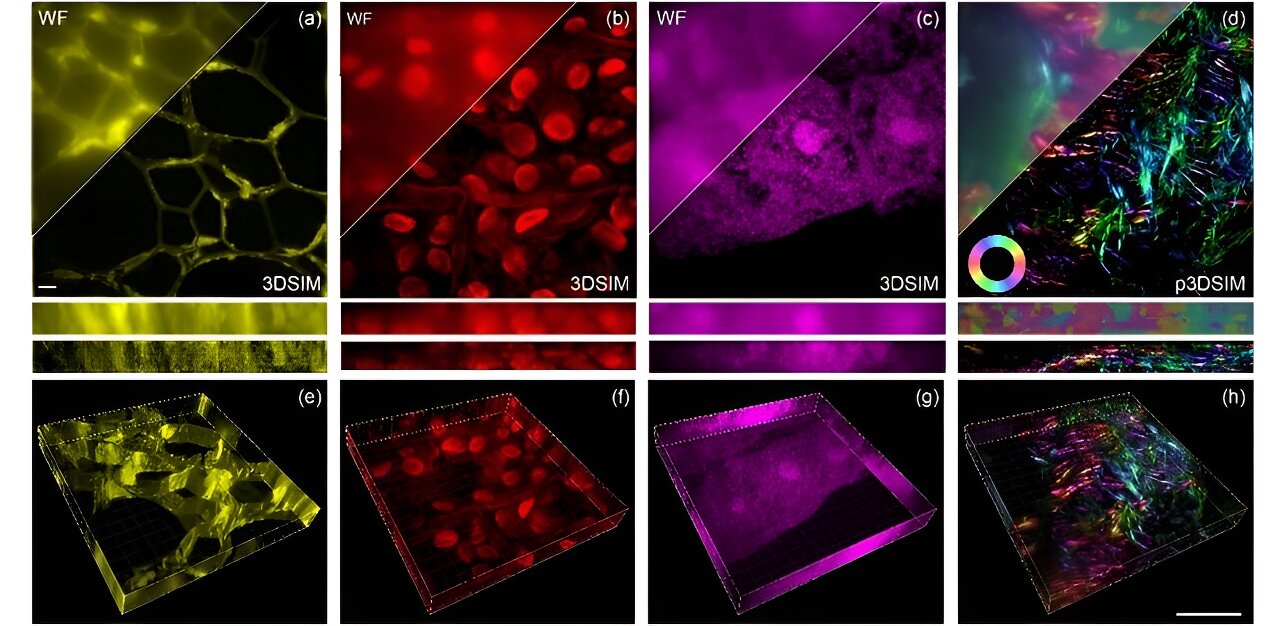The field of microscopy has seen significant advancements in recent years, with improvements in both hardware and algorithms allowing for greater exploration of the tiny wonders of life. However, the development of three-dimensional structured illumination microscopy (3DSIM) has faced challenges due to the speed and complexity of polarization modulation.
According to a report in Advanced Photonics Nexus, Professor Peng Xi’s team at Peking University has created an innovative setup using a digital micromirror device (DMD) and an electro-optic modulator (EOM) to address these resolution challenges. This new system significantly enhances both lateral and axial resolution, providing a 3D spatial resolution twice that of traditional wide-field imaging techniques.
Practically, this means that DMD-3DSIM can capture detailed subcellular structures, such as the nuclear pore complex, microtubules, actin filaments, and mitochondria in animal cells. The system has also been used to study highly scattering plant cell ultrastructures, including cell walls in oleander leaves and hollow structures in black algal leaves. Additionally, in a mouse kidney slice, the system revealed a pronounced polarization effect in actin filaments.
Open Science
What makes DMD-3DSIM even more exciting is its commitment to open science. Xi’s team has made all the hardware components and control mechanisms openly available on GitHub, promoting collaboration and encouraging the scientific community to further develop this technology.
2024-02-15 02:00:06
Article from phys.org
